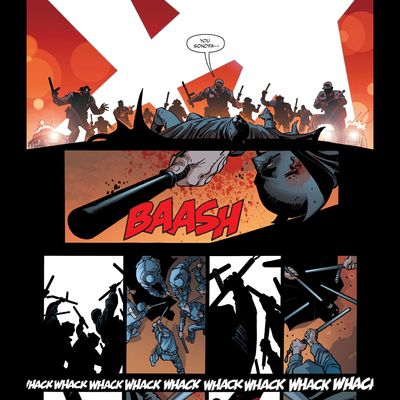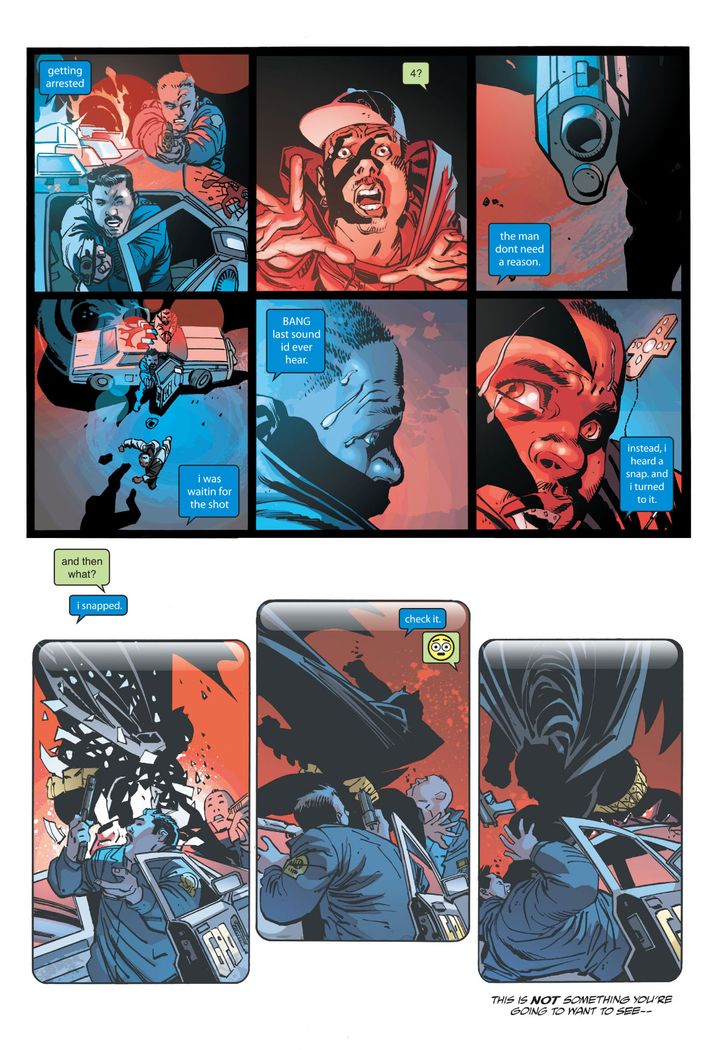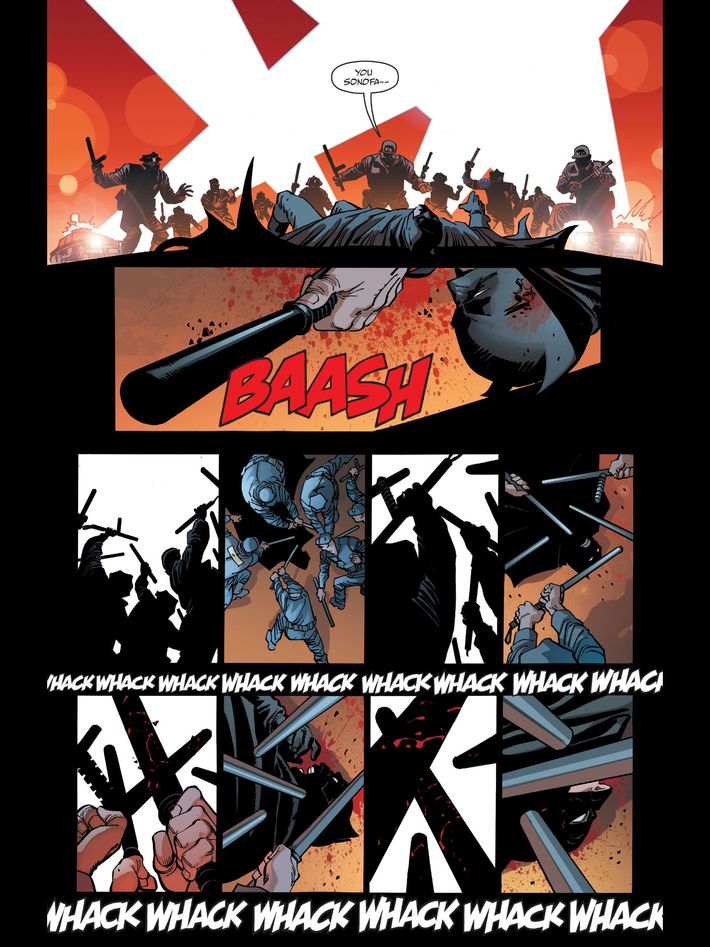
In 1986, writer/artist Frank Miller changed the world of superhero fiction forever with his epochal four-part Batman comics series, The Dark Knight Returns. But if his vision of Batman’s tone was glaringly obvious (dark, angry, punch-prone), his vision of Batsy’s politics was maddeningly ambiguous. On the one hand, he was a perfect vision of an ’80s reactionary: He came out of retirement to beat back the forces of an overly forgiving criminal-justice system and rowdy urban youths. But at the same time, his main rival was a Superman who did the bidding of Ronald Reagan. No, seriously.
Today, nearly 30 years later, Miller just made Batman’s politics even more interesting. The first issue of Dark Knight III: The Master Race — a Dark Knight sequel co-written by Miller and Brian Azzarello and drawn by Andy Kubert — just hit stands. Within its pages, the Caped Crusader tackles an issue that’s at the forefront of current American progressive politics: police brutality. I mean that literally — about half of the issue is devoted to Batman tackling abusive police officers.
Spoilers ahead.
The comic opens with a young black man in a hoodie running from a police car. We see dialogue bubbles styled like text messages between him and a friend (presumably after the events we’re witnessing). The friend asks what he was doing in a bad part of Gotham late at night, to which the kid responds, “Getting arrested.” Friend asks why. “the man dont need a reason” [sic] is the reply. We see the cops exiting the car and raising their guns to fire at the helpless, unarmed boy, whose texts recall that he was “waitin for the shot BANG last sound id ever hear” [sic] when Batman appeared. Sure enough, we see Batsy crashing down onto the cop car and punching the living daylights out of the officers.

Then there’s a classic Dark Knight spread in which we see a bunch of talking heads on TV offering mouth-frothing commentary on the events of that night. Thinly disguised analogues for Kelly Ripa and Michael Strahan focus on how footage of the beatdown went viral; a Jon Stewart pastiche calls the cops pigs; an Al Sharpton look-alike says “the cops got their guns out, what would you do?”; and a Bill O’Reilly stand-in blasts Batman for going after “heroes.”
Most disturbingly, the issue ends with the Dark Knight getting jumped by a massive squad of cops who’ve been sent to nab him for taking on the boys in blue. There’s a bit of struggle, but then Bats goes down hard, and there’s a chilling page that’s mostly just uniformed police officers beating the hell out of a bloody, screaming Batman with billy clubs. White lettering reading “WHACK WHACK WHACK WHACK WHACK WHACK” litters the layout. The reader turns the page to see a smug cop ask Batman’s motionless, abused body, “Had enough?”

This isn’t the first time this year that a Batman story has taken on post-Ferguson police violence — that honor goes to a one-installment story in Batman No. 44, which was drawn by artist Jock and co-written by Scott Snyder and the aforementioned Azzarello. By comparison, the events in Dark Knight III: The Master Race come across as a bit hamfisted, as are the issue’s attempts to replicate text slang and the part where a secondary character’s inner monologue asks, “How did we let our distractions become our focus? When did we stop thinking?” But then again, isn’t that one of the joys of superhero fiction? It can deal in blunt-force metaphors where living embodiments of our ideals punch and kick the living embodiments of our demons. In this case, even a curmudgeonly libertarian-like Miller can share ideological ground with radical progressives like Deray Mckesson to say violent racism in law enforcement is every bit as dangerous as the Penguin or the Joker.

